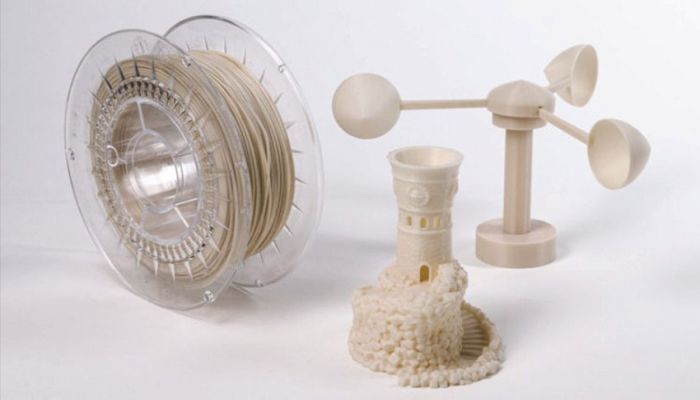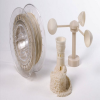 Launch apps instantly. Claim $200 credits on DigitalOcean
Launch apps instantly. Claim $200 credits on DigitalOcean
Can 3D Printers Make Edible Food
Written by Abdul Moid » Updated on: March 24th, 2024

3D Food Printing: The intersection of technology and culinary arts has created a fascinating possibility of creating edible food using 3D printers; this is called 3D Food Printing. As 3D Food Printing continues to evolve, extending beyond its traditional realms, printing not just objects but consumables.
It has now converted into tasty treats and has captured the imagination of innovators and food enthusiasts. This fascinating prospect raises questions about the potential impact on culinary creativity, food customization, and even the future of food production.
This article tells about the realm of 3D printing in the culinary domain, examining the feasibility, applications, and implications of utilizing this cutting. Before we look at 3D food printing, it’s important to have a look at the best 3D printing software.
There are various programs available but the challenge is that most of them are either expensive or they have a steep learning curve. But there are some that are easy to use and cheaper at the same time and a good example is SelfCAD. SelfCAD is an easy to use 3D design software that has been created for users of all levels. It comes with many tools to help you create 3D models and it also comes with 3D printing tools to ensure that you prepare them for 3D printing without having to switch to another different software. The Magic fix tool is one 3D printing tool helpful in fixing non-manifold issues in 3D models, as shown in the video below.
[Embed this video: ]
SelfCAD also comes with an in-built online slicer that users can use to generate the Gcode to send to 3D printer. Get to know how to slice designs in SelfCAD using the video below.
[Embed this video:https://www.youtube.com/watch?v=lpf38aMk8d8 ]
What is 3D Food Printing
A burger is prepared using a 3D printer. Image source: Times Food
3D food printing is an innovative technology utilizing 3D printers to craft various food items in diverse shapes and designs. This process involves using edible materials, such as dough, chocolate, or pureed fruits and vegetables, functioning as the "ink" in the printer.
Through the precise extrusion of these edible materials via a nozzle, the 3D printer brings the digital design or model to life layer by layer.
Printable Edible Materials:
The versatility of 3D food printing lies in its ability to use a range of edible substances, including dough, chocolate, cheese, sauces, minced meat, and more, as building materials. Unlike traditional 3D printing that employs Fused Deposition Modeling (FDM) with heated nozzles, food printing adapts the concept by replacing traditional materials with edible alternatives.
FDM in Food Printing:
Fused Deposition Modeling, a technique widely used in material-based 3D printing, plays a pivotal role in 3D food printing. With FDM, a heated nozzle melts the chosen edible material, precisely extruding it layer by layer to achieve the desired shape or design. This method ensures the creation of intricate and customizable edible structures.
Binder Jetting Method:
Another method in 3D food printing is Binder Jetting, wherein edible binding agent droplets combine with layers of edible powder, such as sugar or chocolate, to form 3D-printed dishes. Notably, Binder Jetting is a versatile technique that can also be applied to non-edible materials like sand, metals, ceramics, and even recycled materials, showcasing the adaptability of this technology across various industries.
This gastronomic innovation of 3D food printing introduces exciting possibilities for culinary creativity, allowing chefs and food enthusiasts to explore novel shapes, textures, and flavors.
Foods That Can Be Printed Through 3D Food Printing
Food (meat) prepared using the 3D printer. Image source: Bernard Marr
Traditionally, 3D Food Printing began with desserts, leveraging the ideal viscous consistency of materials like chocolate and dough. Over time, the capabilities of 3D printers have advanced, enabling them to handle more intricate materials and shapes. Key ingredients and food items commonly employed in 3D food printing encompass a diverse range:
Pasta
Pizza
Mashed potato products
Frostings and icing
Raw meats
Pancakes
Luxury Chocolates
Cakes
Various other ingredients that can be transformed into pastes, gels, powders, or liquids.
While vegetables can also be 3D printed, their high water content necessitates combining them with edible binding agents. This innovative approach holds significant promise, particularly in delivering highly nutritious meals to elderly care home patients who may have challenges chewing traditional solid foods.
Is 3D-Printing Food Safe?
Yes, 3D Food Printing is deemed safe when produced in a hygienic environment. It is important to strictly follow regular food handling and health codes strictly. It also ensures the use of sanitized equipment and fresh ingredients throughout the printing process.
3D Food Printing maintains stringent cleanliness standards and is crucial for the safety and quality of 3D-printed food, affirming its viability as a secure and innovative culinary method.
Benefits Of 3D Food Printing
The benefits of 3D food printing are diverse and extend across various facets of the culinary and food industry. Some notable advantages include
Customization: 3D food printing allows for precise customization of shapes, textures, and designs, providing chefs and food innovators unparalleled creative freedom.
Innovative Culinary Creations: Chefs can experiment with unconventional and intricate food designs, pushing the boundaries of culinary artistry and presentation.
Personalized Nutrition: The technology enables the creation of personalized and nutritionally optimized meals tailored to individual dietary needs, offering potential benefits for healthcare and dietary planning.
Reduced Food Waste: 3D food printing allows for precise ingredient control, minimizing waste by using the quantities needed for each printed item.
Efficiency in Food Production: The technology has the potential to streamline food production processes, particularly in mass catering or large-scale events, enhancing efficiency and reducing preparation time.
Types of 3D Food Printing
The 3D Food Printing technologies utilized for food closely mirror their counterparts in plastic-based printing. The primary types of 3D Food Printing employed for food applications are detailed below:
Extrusion: Operating akin to an FDM (Fused Deposition Modeling) 3D printer for plastics, extrusion-based food printers use a food-filled syringe instead of an extruder and a hot end. Leading machine suppliers in this category include Natural Machine, Foodini, and byFlow.
Binder Jetting: A powder ingredient is laid down in binder jetting, and an edible liquid binder is sprayed on top to fuse the food particles together. 3D Systems and Brill 3D Culinary Studio are notable manufacturers producing binder-jetting 3D food printers, particularly for creating powder-based food products.
Inkjet: This method involves dispensing an edible liquid using multiple inkjet heads. Applications range from creating edible decorative images to utilising bio-ink to print cultured meat. Many companies are developing an advanced inkjet food printer to produce cultured meat products.
Time Taking 3D Food Printing
3D printing food is faster than printing other things. The food material is thick, like a paste, so that each layer can be printed quickly. However, making one 3D-printed food item usually takes 7 to 45 minutes. But cooking the food after printing can take more time.
Conclusion
3D printers can make food that you can eat. They use special materials like dough or chocolate to create different shapes and designs. Although there are still some things to figure out, like making the taste just right, it is an exciting way to combine technology with cooking. The future might bring even more cool ideas and changes in how we make and enjoy our food!
FAQs
Can 3D printers really make edible food?
Yes, 3D printers can produce edible food by using edible materials such as dough, chocolate, or pureed fruits and vegetables as the "ink" in the printing process.
How does 3D food printing work?
3D food printing involves creating a digital design of the food item, loading it into the 3D printer, and then using edible materials extruded through a nozzle to build the design layer by layer.
What types of edible materials can be used in 3D food printing?
Common materials include dough, chocolate, cheese, sauces, minced meat, and more. Essentially, anything that can be transformed into a paste, gel, powder, or liquid is suitable for 3D food printing.
Copyright © 2024 IndiBlogHub.com Hosted on Digital Ocean









Post a Comment
To leave a comment, please Login or Register